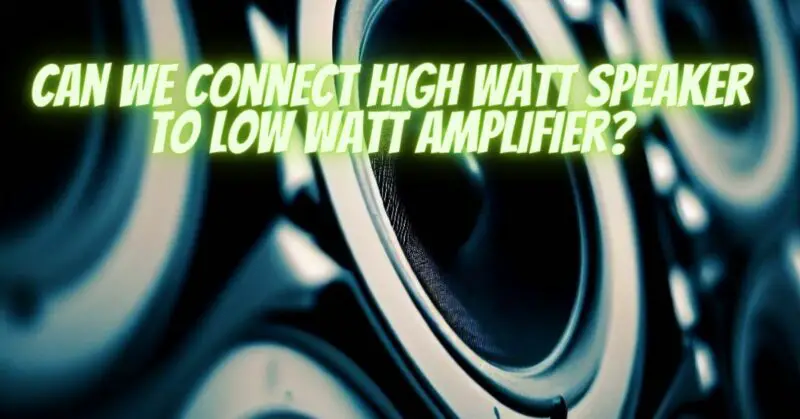The world of audio enthusiasts is filled with intriguing debates, and one that often arises is whether it is safe or even advisable to connect high-wattage speakers to low-wattage amplifiers. The idea of mismatching power ratings might appear counterintuitive, but the truth is not as straightforward as it seems. In this article, we will delve into the depths of this topic, unraveling the misconceptions and shedding light on the possibilities and potential risks involved.
Understanding Power Ratings: Before we embark on our exploration, let’s establish a fundamental understanding of power ratings. Both speakers and amplifiers are assigned power ratings, usually measured in watts (W). The power rating signifies the maximum amount of power the device can handle or deliver.
The Myth Debunked: Contrary to popular belief, connecting high-wattage speakers to low-wattage amplifiers is not an inherently disastrous combination. However, it’s essential to recognize the implications and potential risks involved.
- Volume Control: One crucial aspect to consider is volume control. If you connect a high-wattage speaker to a low-wattage amplifier, you will need to exercise caution when increasing the volume. Pushing the amplifier beyond its capacity can lead to distortion, clipping, and even damage to the amplifier.
- Speaker Sensitivity: The sensitivity rating of a speaker is a crucial factor in determining how efficiently it converts power into sound. Speakers with higher sensitivity ratings require less power to achieve the same volume level compared to speakers with lower sensitivity ratings. Therefore, a high-sensitivity speaker can be a better match for a low-wattage amplifier.
- Impedance Matching: Impedance, measured in ohms (Ω), refers to the electrical resistance of a speaker. Ensuring that the impedance of your speaker and amplifier are compatible is crucial. Most amplifiers can handle a range of speaker impedance values. However, connecting a speaker with an extremely low impedance to an amplifier designed for higher impedance can strain the amplifier and potentially cause damage.
- Distortion and Speaker Damage: When you connect a low-wattage amplifier to a high-wattage speaker and push the volume beyond the amplifier’s capacity, distortion can occur. This distortion not only affects the sound quality but also poses a risk of damaging the speaker if prolonged. Continuously pushing the speaker beyond its limits can cause overheating of the voice coil, leading to permanent damage.
The Ideal Match: For optimal performance and to mitigate potential risks, it is advisable to pair speakers and amplifiers with compatible power ratings. Choosing speakers with sensitivity ratings that complement the amplifier’s power output will allow you to achieve the desired sound quality without pushing the equipment to its limits.
Conclusion: While it is technically possible to connect high-wattage speakers to low-wattage amplifiers, it is essential to understand the potential risks involved. Volume control, speaker sensitivity, and impedance matching are crucial factors to consider. By exercising caution, maintaining moderate volume levels, and ensuring compatibility between the components, it is possible to achieve satisfactory results. However, to experience the full potential of your audio system, it is generally recommended to match speakers and amplifiers with compatible power ratings.


